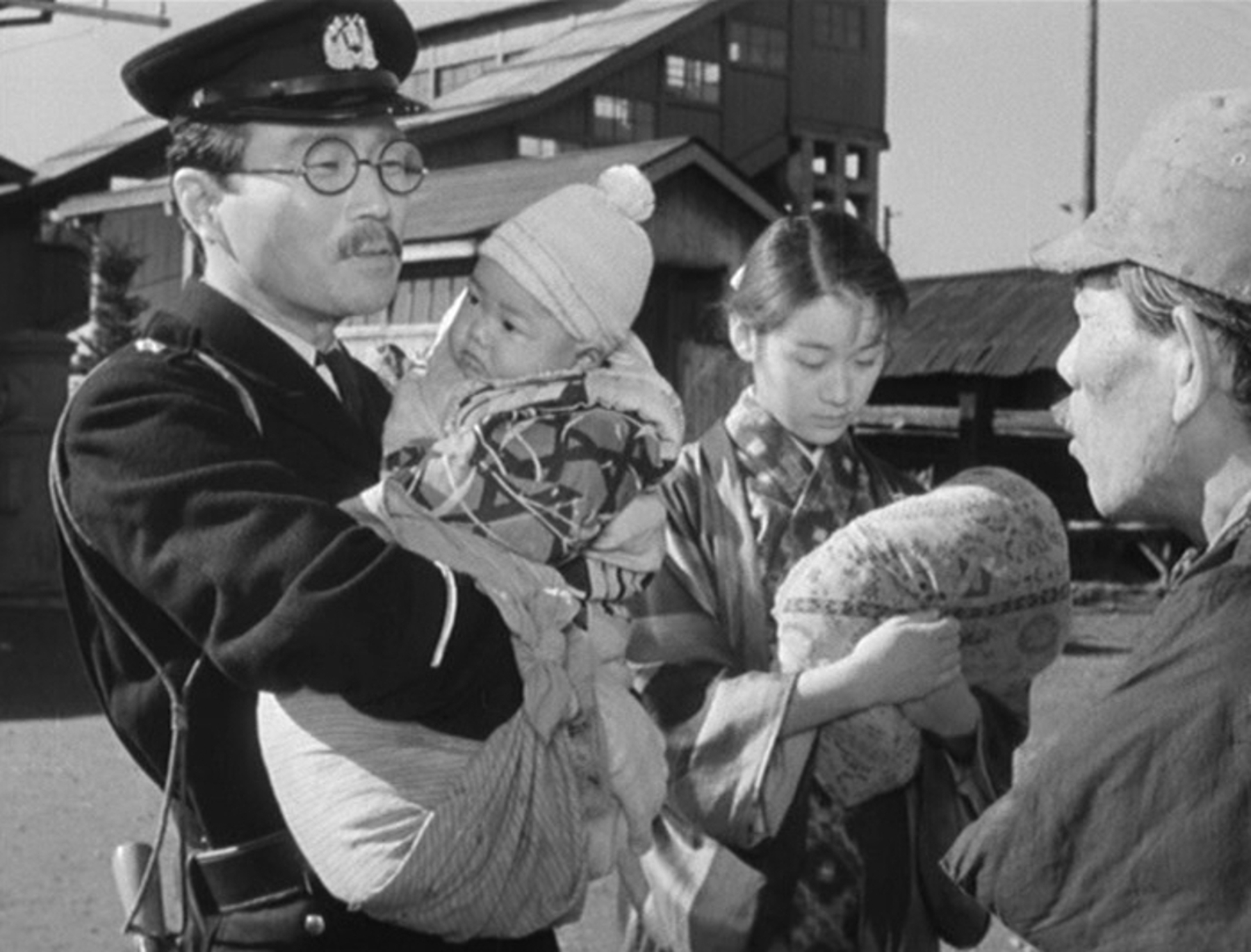Akira Yamamoto (1932 – 1999), a sociologist, recalls his experience during his kindergarten days in 1937.
In the playground of elementary school in my neighborhood, I saw many newsreels in the screenings sponsored by a newspaper agency. Up on the screen, I saw the train packed with soldiers were sent off with cheers of ‘Banzai, Banzai’. Cargo vessels traveling through China Sea, soldiers holding guns advancing over a river, those soldiers charging to castle wall … and they took the castle, put up our flag and yelling ‘Banzai’… I saw these newsreels among the crowd packed in the playground. Sometimes people cheered and applauded to the screen.
This scene was not particularly out of ordinary back in late 1930s. In fact, this might well have been the only mode of newsreel presentation in rural areas where movie experience itself was scarce. Then, as the nation sank deeper and deeper in the war, the government felt the necessity to control the information fed to the public. After the break of the Pacific War, Nippon News, screened in schools and community centers, was designed to evoke patriotism among children, showing heroic, often tragic, acts of their fathers and brothers. The last toast among Kamikaze pilots before take-off was a staple formula in Nippon News until the very end of the war.
Newsreel theaters usually scheduled an one-hour program, with 10 to 11 screenings per day. Newsreels from various productions comprised only portion of such programs, the rest being “cultural movies” or “documentary movies”. For example, these were the programs for major newsreel theaters around Tokyo for the week of May 5, 1938:
Marunouchi Shochiku International News Theater
Newsreels (domestic), Pathe News, Alpine Climbers (Micky Mouse, Disney), Dog Training, Threat of Reds
First Underground Theater
Protect Your Health, Screen Pictorial, Sumo Wrestling, Wiping Out Defeated Enemies, The Grasshopper and Ants (A Walt Disney Silly Symphony), Newsreels (domestic), Paramount News
Ginza News Theater
Newsreels (domestic), Pathe News, Electric Ducks, The History of Airplanes, Sports Specials
Asahi News Theater
“Time of Emergency Week”, Newsreels (domestic), Paramount News, National Defense (Japan), I’m in the Army Now (Popeye cartoon), Threat of Reds, etc.
Large part of the program was devoted to propaganda films such as Threat of Reds, National Defense. Interestingly, all theaters had at least one Hollywood cartoon.
One of the reasons for sudden surge in popularity of newsreels (which, by the way, had been produced domestically since early 1930s) was the quality of sound engineering. Even as late as 1938, some of the talkie feature productions in major Japanese studios suffered from inadequate recording, synchronization, or simply bad diction by actors. Many audiences experienced inaudible dialog or loud music etc. and expressed their frustration. Experience of sound films was particularly poor in rural areas, where the poorly-quipped theaters had to use prints heavily damaged from previous screenings in major cities. In contrast, the audio quality of newsreels was significantly better. They were shot in silent, then the voice-over narration was added later. This itself made the programs extremely more reliable. Furthermore, these newsreels were screened only for a week. There would be no degraded prints reused for smaller revues. Lower cost, newspaper syndicate network, and keen interest on current topics among audience helped to propagate newsreel throughout the country.
Interestingly, this sound track – voice-over narration and music – turned out to be one of the most effective tools of propaganda film-making. It gave a meaning. It elicited emotions. It coerced viewers to hate. It demanded loyalty.
